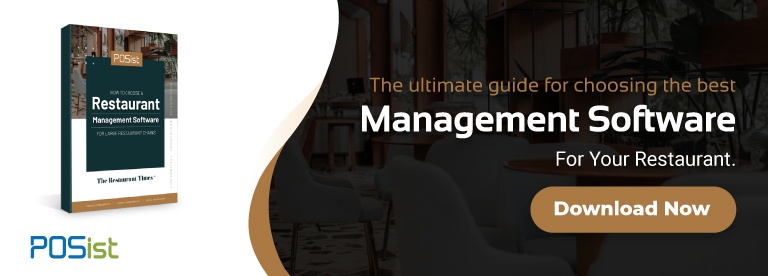Once the restaurant has been set up, and the restaurant owner is earning profits, the next step for any successful restaurant business is its expansion. Restaurant owners mainly turn to the Franchise route for restaurant expansion because of lack of time and the resources required for executing the expansion of their Restaurant Brand. Starting Franchise Restaurants is a way to expand your business, wherein you (the franchisor) give a license to independent owners (Franchisee) to use your Trademark, business model, and processes to sell or provide services under your Brand Name.
Here are some more tips that will help you expand your restaurant business.
How To Franchise Restaurants In Ten Steps
People are mostly under the impression that franchising a restaurant is a complicated process. The truth, though, is far from it. Just like any other expansion project, it takes time and effort to franchise restaurants, but that does not mean that it is an arduous process. If you think you are ready to expand your restaurant business and venture into Franchise Restaurants, here are the ten steps that will guide you through the entire process.
1. Current Model Evaluation
Before you start looking for business partners and roll out your Franchise Restaurant License, you should evaluate your business from end-to-end. The most crucial aspect to consider is, is your concept scalable? Can it be systemized and standardized? Often, Franchise Outlets fail because they are not able to maintain the consistency and standards of the leading brand.
There is always a risk of dilution of the Brand Name if the Franchise Outlets do not perform well. Also, the current business model needs to be profitable. Evaluate the cost structure of the cash flow for the first year and what would be the five-year-return to the franchise.
The cost structure includes the following-
- Initial setup cost
- Infrastructure development
- Equipment required
- Technology
- Marketing plan
- Human resource
2. Robust Process
If your concept is replicable, then you need to establish a robust and efficient process to ensure consistency across outlets. The main aspects are-
- Sales Reporting and Tracking
- Stock and Inventory Process
- Supply Chain Management
- Vendor Management
- Payouts and Commission Management
- Staff Training
Managing the business of multiple Franchise Restaurants can be a daunting task. Thus, using Franchise Management software helps to resolve this issue.
Read this e-book talks in detail about the essential features you should be looking for while deciding a POS system for your franchise operations.
3. Trademark and Logo Registration
When you franchise your restaurant, you give someone the right to use “Your” logo and Trademark. Hence, registering your brand’s logo and acquiring a trademark is the most important, yet often most ignored the step of franchising your restaurant. Registering for a trademark becomes essential when you begin to think of Franchise Restaurants. To protect your Intellectual Property, franchisors should get everything registered, to protect from a fraudulent Franchise party.
4. Cost Estimation
After deciding the processes, you need to prepare an initial setup cost or investment plan for Franchise Restaurants. The top restaurant franchise business models owe their success to the accurate cost estimation and cutting down on their food costs, wherever possible. It should have all the possible heads of expenditure. Based on your restaurant’s business model, divide the initial setup costs.
Infrastructure
- Location (Rent for three months)
- Interiors
- Electric and Electronic Fittings
- Furniture
- Branding / Signage (Interior / exterior)
Licensing & Establishment Cost
Here are a few licenses that you will require for the further establishment of your outlet. Other than that, you can look at a complete list of licenses you would otherwise need to settle down with a restaurant.
- FSSAI
- VAT/GST registration
- Local Municipal Licenses
- Liquor Licenses*
Franchise Fee
- Royalties
Working Capital Requirement (For the first six months)
- Rental
- HR
- Electricity
5. Cash Flow And Financial Projection
Based on the current and the past sales of your restaurant, consider the current Cash Flow and the Financial Projections. The franchisor should prepare a cash flow for the revenues based on the number of orders per day and multiply it by the average ticket size.
For example, if your outlet gets 56 orders on weekdays and 70 orders on weekends, the total orders in 30 days would be 1,792 (56X22= 1232 and 70X8=50). With an average ticket size of Rs 400, the monthly revenue of the outlet will be Rs 7,16,800.
Further, the franchisor should estimate the expected average growth rate and project it for the first twelve months of the business of the franchise. Also, project revenues for the first five years or the tenure of the franchise.
(Sample Image)
6. Brand Profile
Prepare a Brand Profile and to give a better understanding of your Franchisees. You must be in the zone of competing with the top restaurant franchises in India. The documents should contain the vision of the brand. It should also give the vision of the brand provide a brief detail about the products and services offered along with the schedule of the opening of the new outlet.
You also need to mention what kind of support you would be providing to the restaurant franchise before and after the establishment. This will enable you to induce some level of consistency in the brand. As mentioned earlier, consistency may be lost when you franchise your restaurant, which will tarnish the parent brand’s reputation. To avoid such a situation, create a culture of adhering to the brand values from the start.
7. Franchise Agreement
Since there are no laws specific to Restaurant Franchising, it is vital to have a registered agreement between the two parties to protect the rights of both the franchisor as well as the franchise. The Agreement should speak about the payment, plan, tenure, schedule, royalty, and the support the franchisor will provide to the franchise. At times, the Franchise Restaurants stops paying the royalty once the business has been set up.
And there is no law to protect the franchisor under which it can sue the franchisee or take away the right to continue the business. The Restaurant Times contacted many franchise consultants to get the real picture. One of the consultants working for a leading exhibition company said,
“There is no law in favor of a franchisor. Even if you get a registered agreement, it can still be tough to get hold of the franchise because there is no law for this”.
8. Training
Training of the Staff is essential to maintain the standards of the product as the original Franchise Restaurants. The franchisor should execute the training of the entire staff, right from the Head Chef to the busboys. The induction and training of the new employees should be done much before the opening of the Franchise Outlet.
Most successful Franchisors prefer to recruit at least a few employees one month before the opening of the new outlet and give hands-on training to the existing outlets to provide the recruits with an idea of the level of services expected from them. Some Franchisors also employ some of their old staff at the new outlet to train the new employees.
9. Marketing and Advertising
Based on the geographies, the franchisor can support the franchisee in marketing and advertising by including it in the original plan or help them understand the market and execute marketing activities on behalf of the franchisee in the initial days. It is vital to have a clear Brand Guideline for the Franchisees to adhere to.
Clearly outline what all tasks the individual Franchise Outlets are responsible for, such as having a Social Media presence, listing on Restaurant Review Sites, etc. Remember to provide templates, logos, and other Brand-specific items such as menu design to ensure consistency across all outlets.
10. Support
The franchisor should clearly spell out the support it will give to the franchise. For example, some Franchisors only offer support in Infrastructure Development, operations, training, and Software, while some also supply raw materials. The support should be mentioned in the Agreement to avoid any confusion later on. Replicating the success of an already established restaurant is quite a daunting task. There are multiple challenges at each level, the primary ones maintaining the consistency in terms of the taste of the food and the service provided.
The entire Guest Experience needs to be replicated, almost precisely. Even then, there are several factors, such as the Target Customer Base and the Location that play a crucial role in the success of the restaurant. Thus, Franchise Restaurants come into the picture. When done right, Franchising proves to be a lucrative business approach.
Learn how a sturdy restaurant franchise management software can help you in managing multiple franchise outlets efficiently.





















really helpful article this is.
Great information on how to franchise your restaurant brand. Franchising is the best option if you want to expand your restaurant quickly and is also profitable.
Restaurant expansion using franchise is something that is in trend. We can see several big as well as small brands expanding their branches through franchising.
This is a great article if you are researching the cons of franchising.
The benefits of franchising as a means of expanding a business are twofold. Firstly, it involves low capital investment by the franchisor as the capital used to expand the network comes from franchisees. Secondly, by franchising the business, the franchisor places the expansion of his/her business in the hands of people who are motivated to make it work. Very well done Restaurant Times.